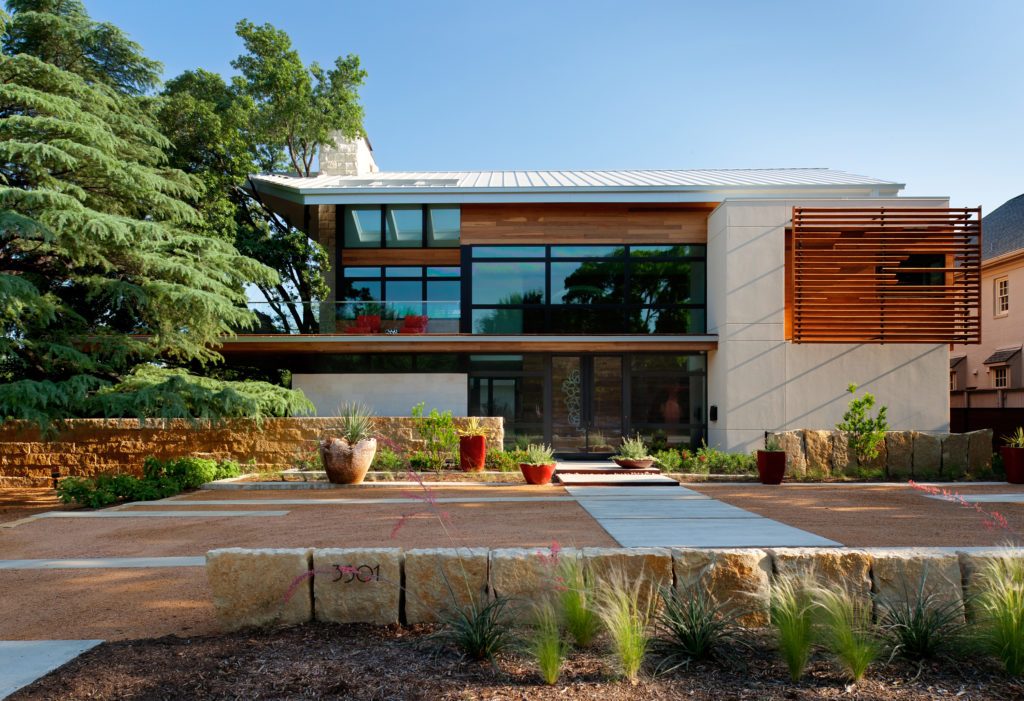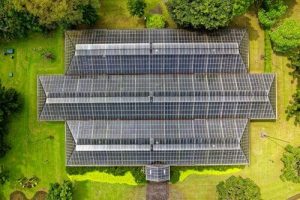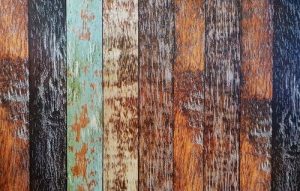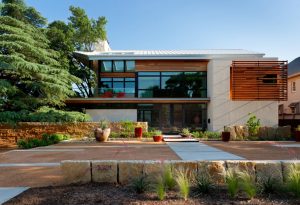
5 Design Ideas that Support Sustainable Architecture
The words ‘sustainable architecture’ are being heard more and more, as people’s enthusiasm for all things environmentally friendly continues to grow. But what exactly is meant by sustainable architecture? It is a way of designing and constructing that seeks to lessen the total environmental impact of a building. This can be done by conserving energy, and through the materials used in construction. It begins right at the start of the planning process, so that the impact on nature and its sustainability can be monitored every step of the way. Want to know more? Here are five design ideas that support sustainable architecture.

1. Solar Panels
We all know about solar panels, right? They’re placed on a roof and collect energy from the sun. When planning a building with solar panels in mind, the roofs are normally angled so that the panels can soak up as much of the sun as possible. Even on cloudy days, solar panels can provide a surprising amount of energy. In some countries, such as Germany, they are common on new residential homes.
Solar panels can also be used to heat water. This free alternative to fossil fuels is not only sustainable, it will produce all of the hot water that is needed in a day. While expensive to install, due to the cost saving effects, it doesn’t take long for a system like this to pay back the initial cost.

2. Recycled Lumber
When you think about architecture, what type of materials do you imagine being used? Freshly cut timber? What about reclaimed or recycled wood? When buildings are demolished, many of the materials from them would potentially go to waste if they weren’t reclaimed. Lumber is one of the most versatile, as often it is still in extremely good condition. It is now popular to make hardwood flooring out of wood that has been reclaimed from other buildings. Doing this not only saves wood that would have ended up in a landfill, it also reduces the needs for further timber to be cut down, protecting a valuable resource.

3. Waste Management
Part of being sustainable is ensuring that nothing goes to waste. Grey water from sinks can be reused in a sprinkler system or flowerbeds, and the water used to flush toilets can come from collected rain water. It’s all about what the building was designed to do. A food composting system is one of the best ways to make the most out of the tons of food we throw away each year. Vegetable peelings and tea bags can all be composted and provide rich nutrients for our green areas. The same goes for our waste as well. Composting toilets can seriously reduce our water usage.

4. Bamboo
Bamboo has been hailed as miracle would for its fast-growing properties. Having been used for centuries in China, the West is slowly coming to realise just what all the fuss has been about. Bamboo grows incredibly fast, so unlike our native wood, cutting down bamboo for use in building materials won’t have a massive impact on the environment, as it will regrow to the same size in just six years. It’s great for making scaffolding as the structures can be built to incredible heights and still stay strong. Using this instead of traditional materials is a far more sustainable method.

5. Insulation
When it comes to sustainable architecture, one of the first things that should be considered is how the building is insulated. Poor insulation will mean high energy bills in the winter, which in turn means the use of more fossil fuels. A building that is well insulated will prevent heat from escaping. Double or triple glazed windows are advised, as well as good wall and roof insulation. The insulation itself can be made of recycled materials such as denim, which is another way to make a building more sustainable. A well-insulated building should still have a good cooling system for summer and make use of natural air flow so it isn’t over-reliant on air conditioning.
Make Portella a part of your next renovation or new architectural design. We provide high-quality steel doors, steel windows, and so much more. Find out more about us or get in touch today to see how our products can make a big difference in the look of a building’s architecture.
Leave a Reply